In the Spotlight · Cenlitros
What happens when contemporary design finds a foothold in folklore, tradition and nature? We plunge into the world of Cenlitros looking for answers; a design studio that builds its identity from the particularities of Galicia and that, since its birth in 2006, has explored the intersection between artisanal tradition and contemporary innovation, creating pieces that reflect the essence of the natural and cultural environment of the region.
This is how Cenlitros has forged its path, from its peculiar name to its deep relationship with light and the materialisation of Galician identity in its collaborations with a·emotional light: Parga, Nebra and Cambo.
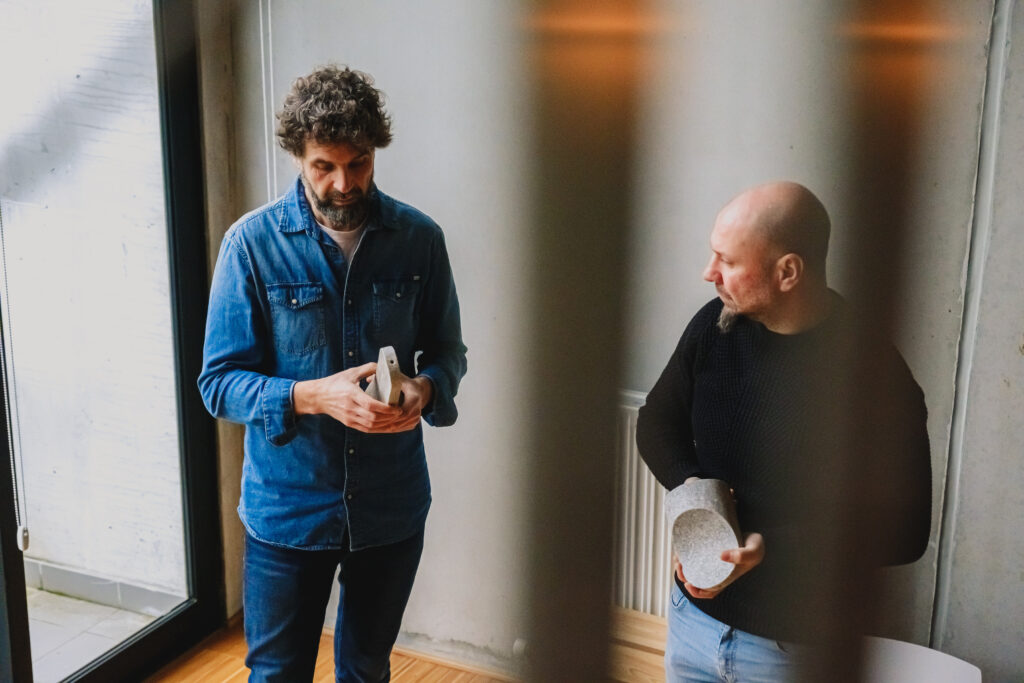
One. Where does your name come from? How did you start? What are your references in the world of design?
The name comes from the differential fact of the amount of rain that falls in Galicia in general and in Compostela in particular. If the climate shapes our character, it is easy to deduce that our work is also influenced in some way. We seek to make a flag of this climatic particularity and define the identity of the studio through the Atlantic concept.
The studio was founded in 2006 by three recently graduated industrial design students from the Ferrol School of Design. A very natural process based on a relationship of both personal and professional affinity. We are not very fond of citing references in the field of design. Our references often come from the rural world, nature, craftsmanship… because we have lived with this type of formal repertoire and materials since childhood.
Two. What is your relationship with light?
We always try to look for very contained levels of lighting, where the light contributes a suggestive factor to the space without making it obvious. This way of lighting has been part of our personal imaginary since childhood. Over time, a misinterpretation of technology has distorted this relationship between light and space, which we need to rethink.
Three. In your work there is a marked Galician identity. What is the importance of Galician design? Is there such a thing as Galician design?
It’s never easy to talk about oneself… We understand that as long as you are yourself whilst working, taking into account your personality, your culture, the means available in your environment… you will be incorporating that component of personal and local identity into your work. This should come naturally, as a consequence of a way of being, never in a forced way. When there is an intention to imprint that local character, the work acquires an overacted, impostured or almost folkloric dimension, often falling into stereotypes.
We are not aware of the existence of a sub-typology of design that we could call – Galician design – according to formal or material aspects. I would simply define Galician design as design that is produced by Galician designers, without any other particularity.
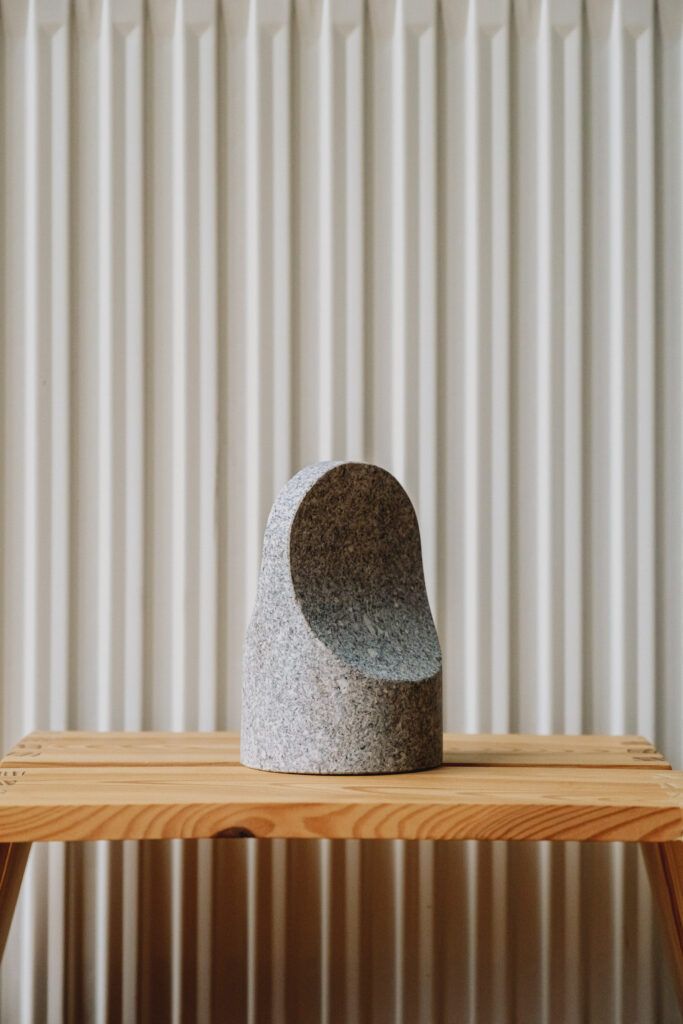
Four. Are we experiencing a revival of the Made in Galicia, both in fashion and in design, literature or cinema (Novo Cinema Galego)? What do you attribute this to?
The textile sector in Galicia has been deeply rooted since the eighties, both in terms of professionals dedicated to design and specialised academic training. However, this tradition does not extend to other fields of design or creativity, which are emerging but with a lesser presence. In the case of industrial design, our less industrialised past compared to other geographical areas hinders the development of this speciality. To be honest, we are not very optimistic about the effervescence of creativity in Galicia.
Five. How would you define a·emotional light in one word? Where does your collaboration come from?
We have been following the company since we were students. In Galicia there are not many firms that are committed to design as a strategic factor, which is why it was always in our minds to be able to make some kind of collaboration. For us, a·emotional light represents an open door to product design in general and lighting design in particular. In the previous stage, and in spite of trying to get closer, it was not possible to develop any collaboration. With the change of management, we resumed contact and progressively a professional and personal affinity arose, which naturally resulted in different collaborations. The human component is fundamental for the relationship to be fertile and long-lasting.
Six. Your collaboration with a·emotional light has resulted in three collections of luminaires: Parga, Nebra and Cambo. What is the common thread running through these three collections?
Without intending to, it is common for references to nature to appear in our work. We feel particularly comfortable using natural materials such as stone and wood. Apart from this affinity of languages, we attach great importance to the multi-sensoriality of the materials: textures, scents… Especially at a time when the visual overrides the rest of the senses. In addition to working with materials and languages that are close to us, we try to look for meeting points and interactions with light. We must understand how each material expresses itself and what potential it offers in the context of lighting. We must not lose sight of the fact that the aim is to work with light; materials and forms are only the tools to achieve this.
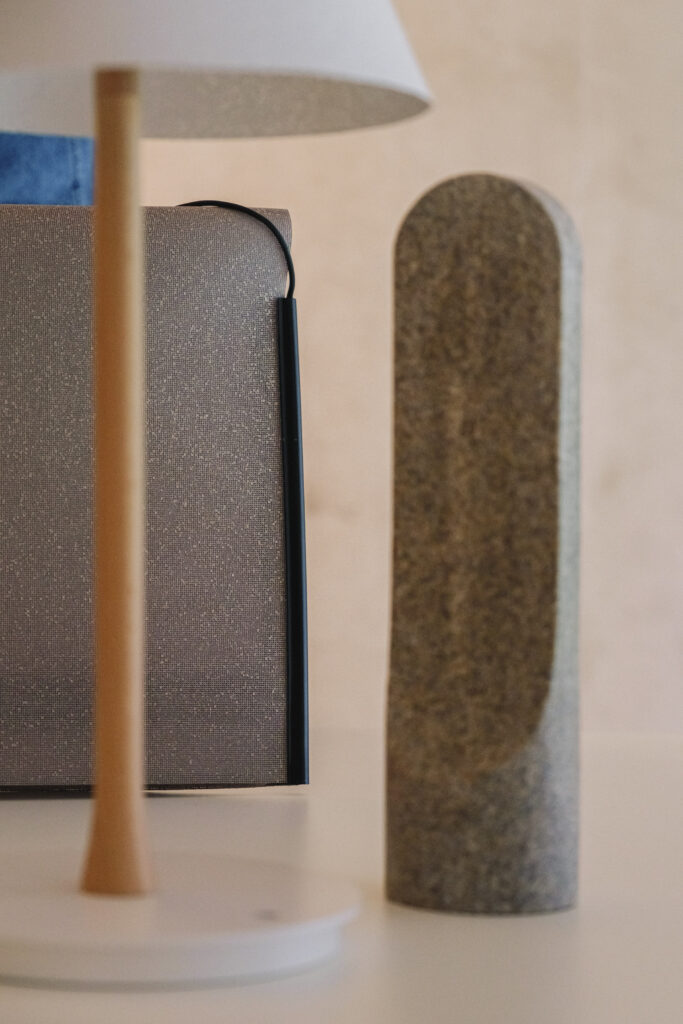
Seven. What is the origin of Parga’s design?
Parga was born out of a provocative gesture, using a material such as stone in the context of lighting. To begin with, we can understand that it is an unnatural material in this environment, as it is heavy and complex to work with. That was the challenge, to create from this supposed weakness a strength that would give us personality and differentiation in an increasingly standardised segment. There was also a component – glocal – of creating a piece with a global vocation from a very local starting point, such as the use of small fragments of discarded granite.
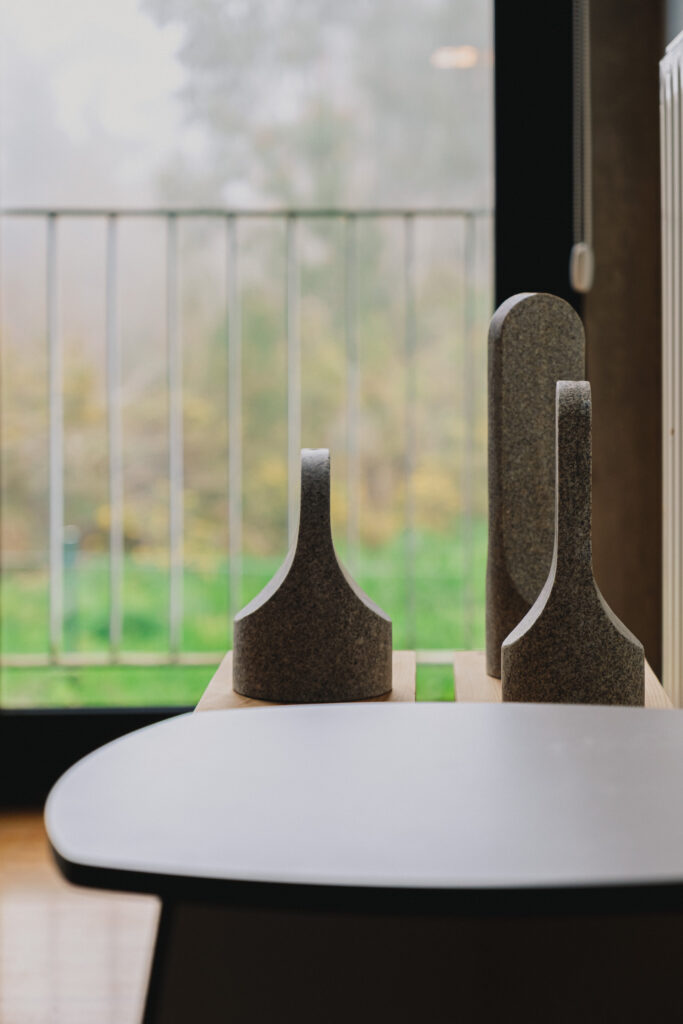
Eight. How can pieces born of the artisan tradition be integrated into a modern project?
It is essential to dissociate craftsmanship and tradition. Craftsmanship can have a strong contemporary vocation. Craftsmanship is simply a tool; we must understand the limitations and opportunities it offers in order to get the best out of it. Craftsmanship is also flexible enough to allow for variations and adaptations to specific projects. Another potential of handmade production lies in the delicacy of the finishes and manufacturing details that the craftsman’s hand imprints. On the other hand, it is essential to understand where handmade production adds value, so as not to slow down and make the piece unnecessarily expensive.
Nine. What is the essence of Cambo, winner of the Paraugas Award in 2021? How does such recognition affect your work: motivation or pressure?
Cambo takes morphology and the laws of plant growth as a reference. It defines the bifurcation as a basic element that adapts according to the needs of each typology. The use of an element taken from nature brings a vernacular component to the piece, in contrast to the metal mesh and the LED lighting source.
Awards are always a moral compensation for the work. You always need to put your work on trial to see if it has the acceptance and value it is intended to have. There is no extra pressure, I think the pressure is implicit in the way the profession is understood and developed. Recognition always provides extra motivation to take on new projects.
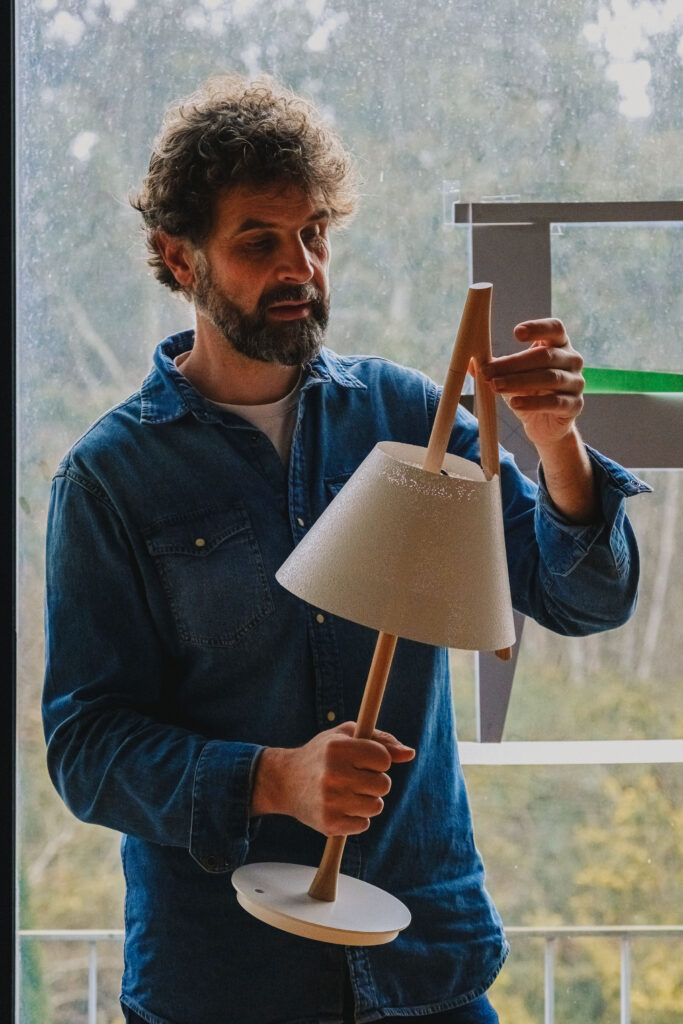
Ten. If your lamps were to be a music album, which one would each of them be?
Cambo, The Joshua Tree (U2).
Parga, Violator (Depeche Mode).
Nebra, Chronology (Jean Michel Jarre).